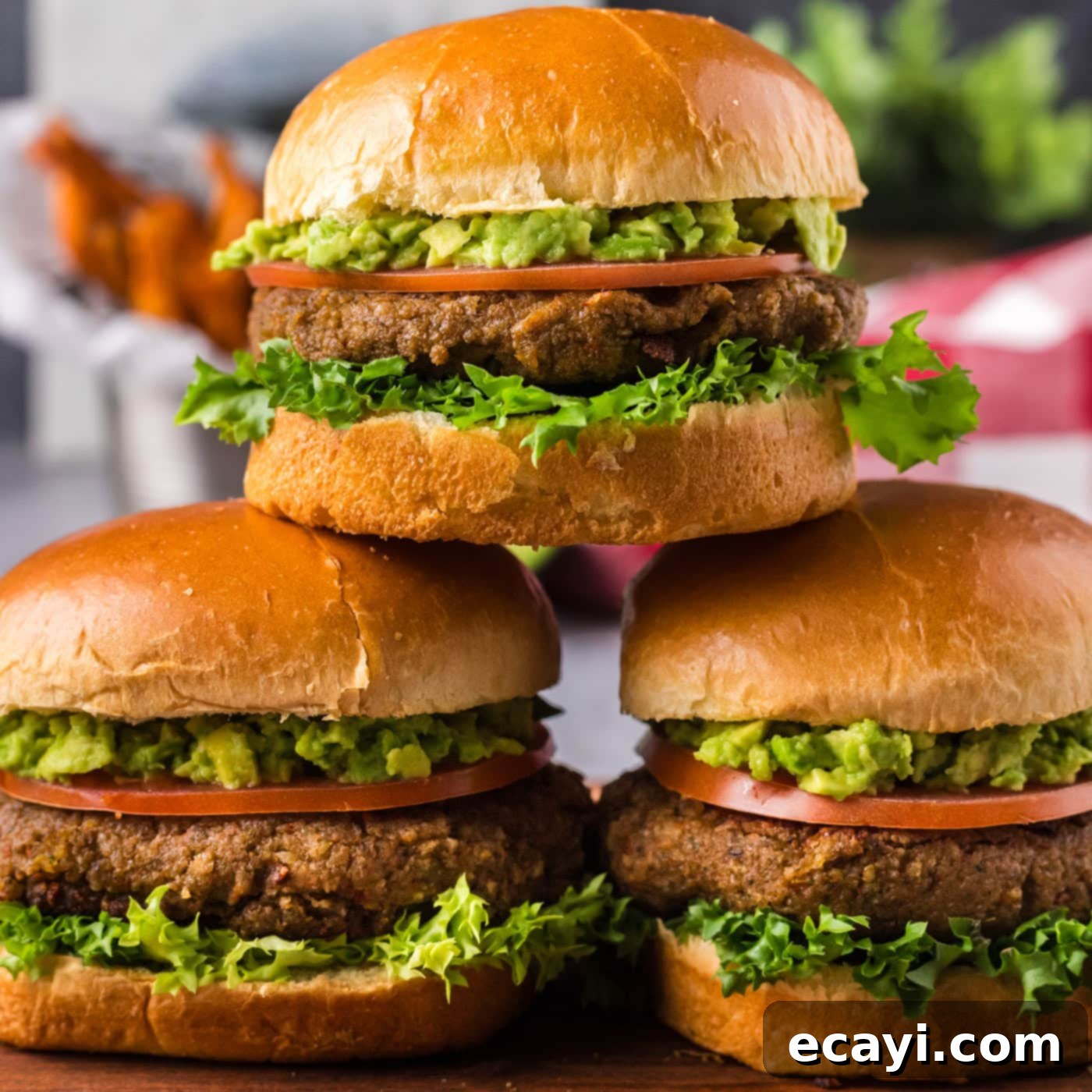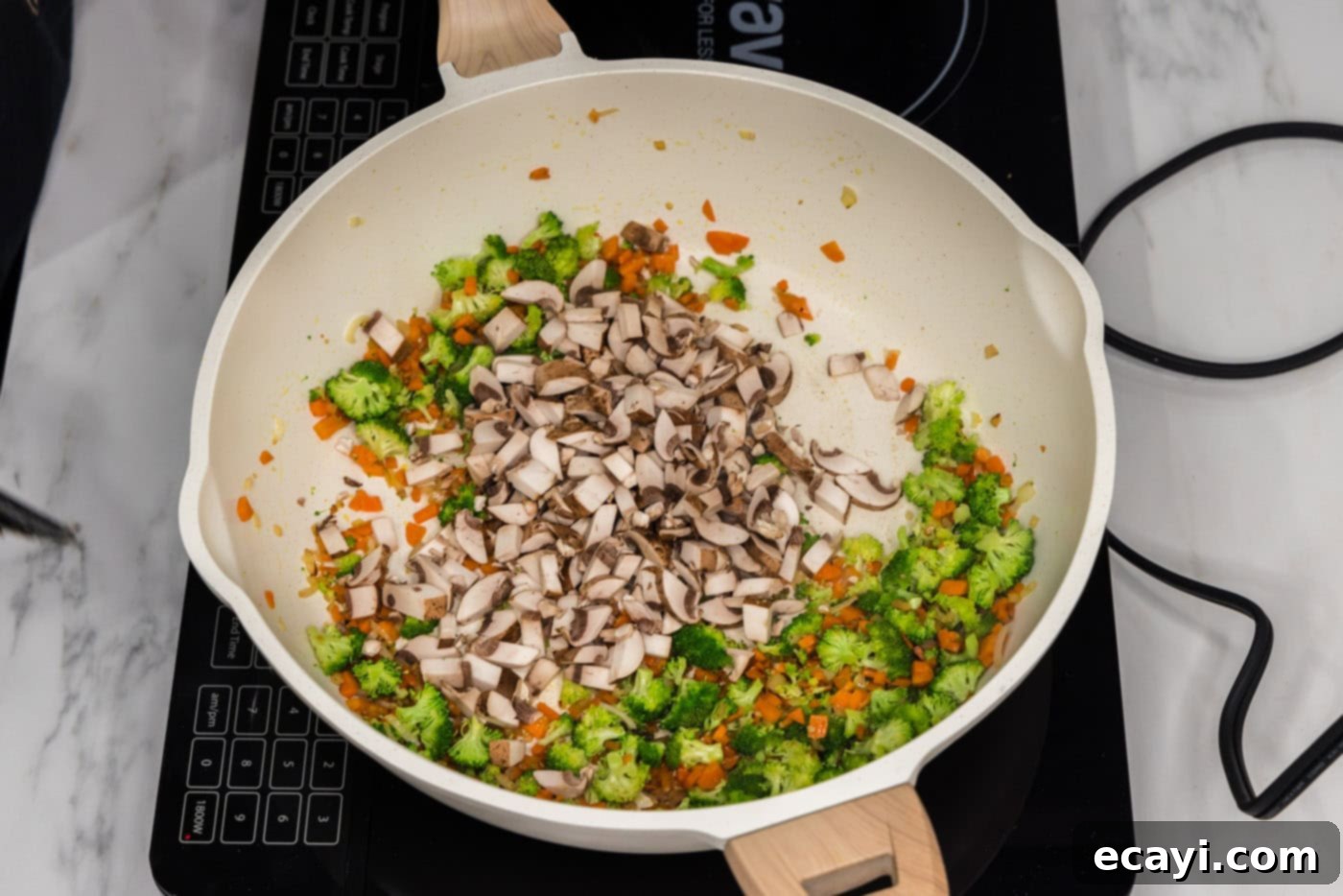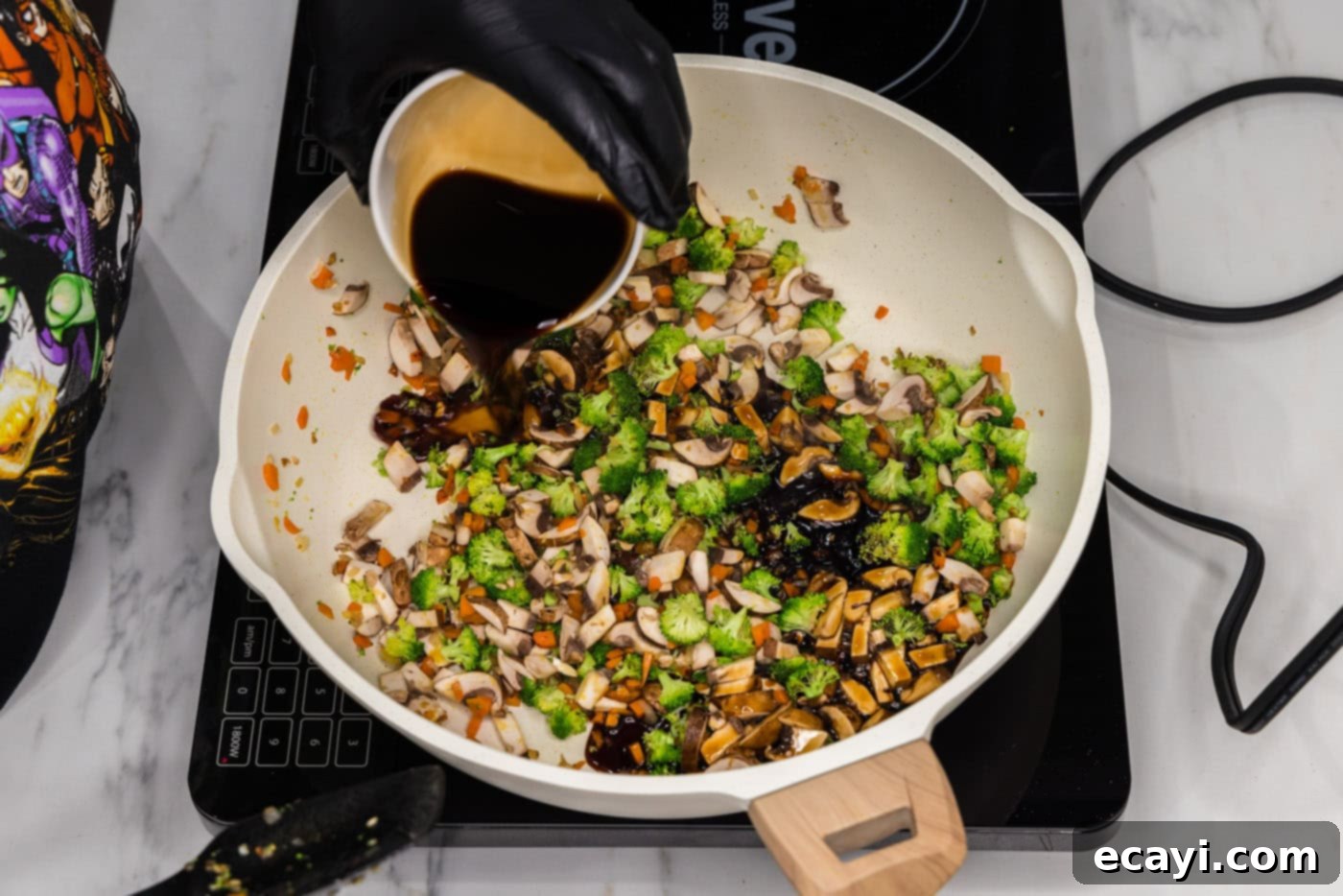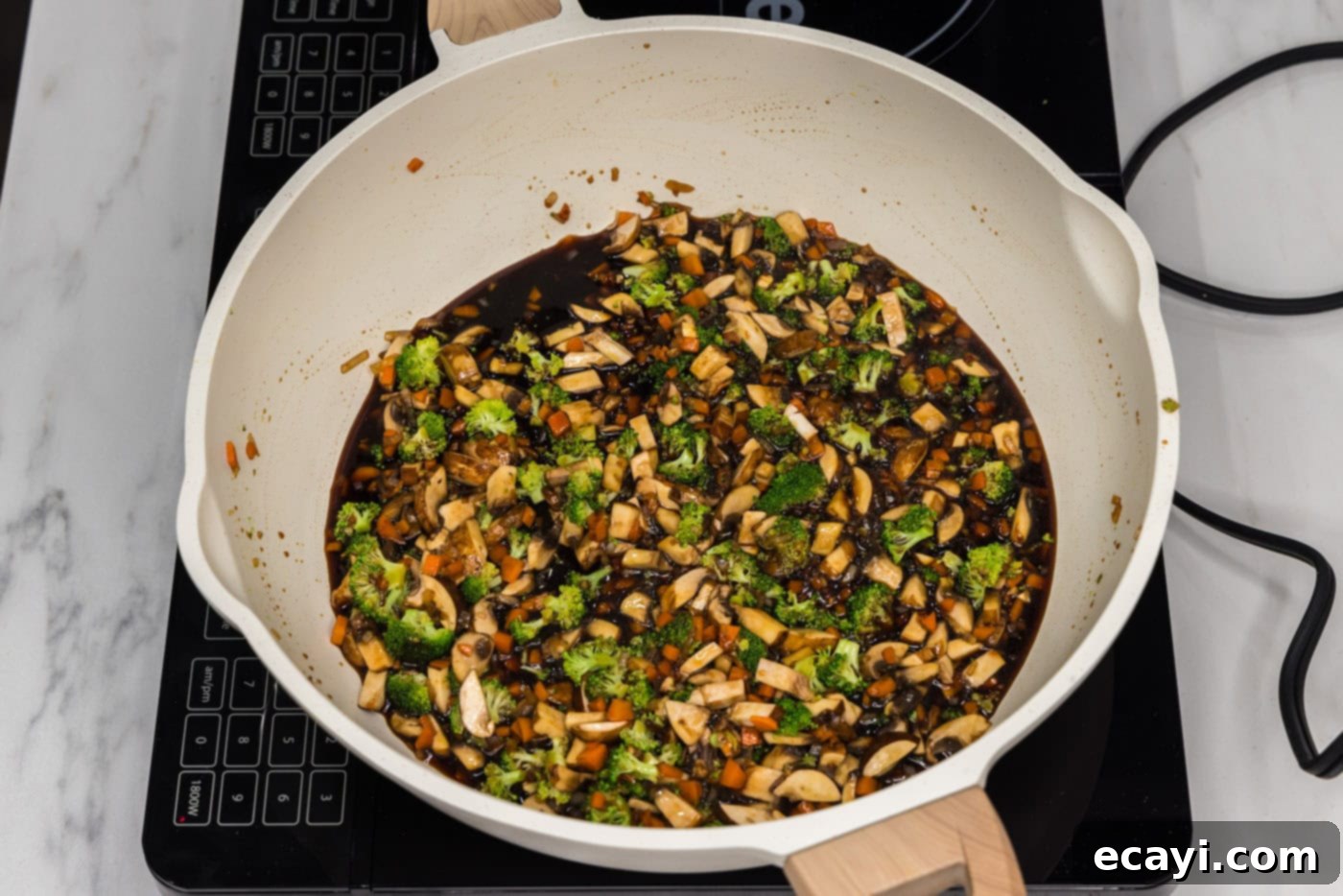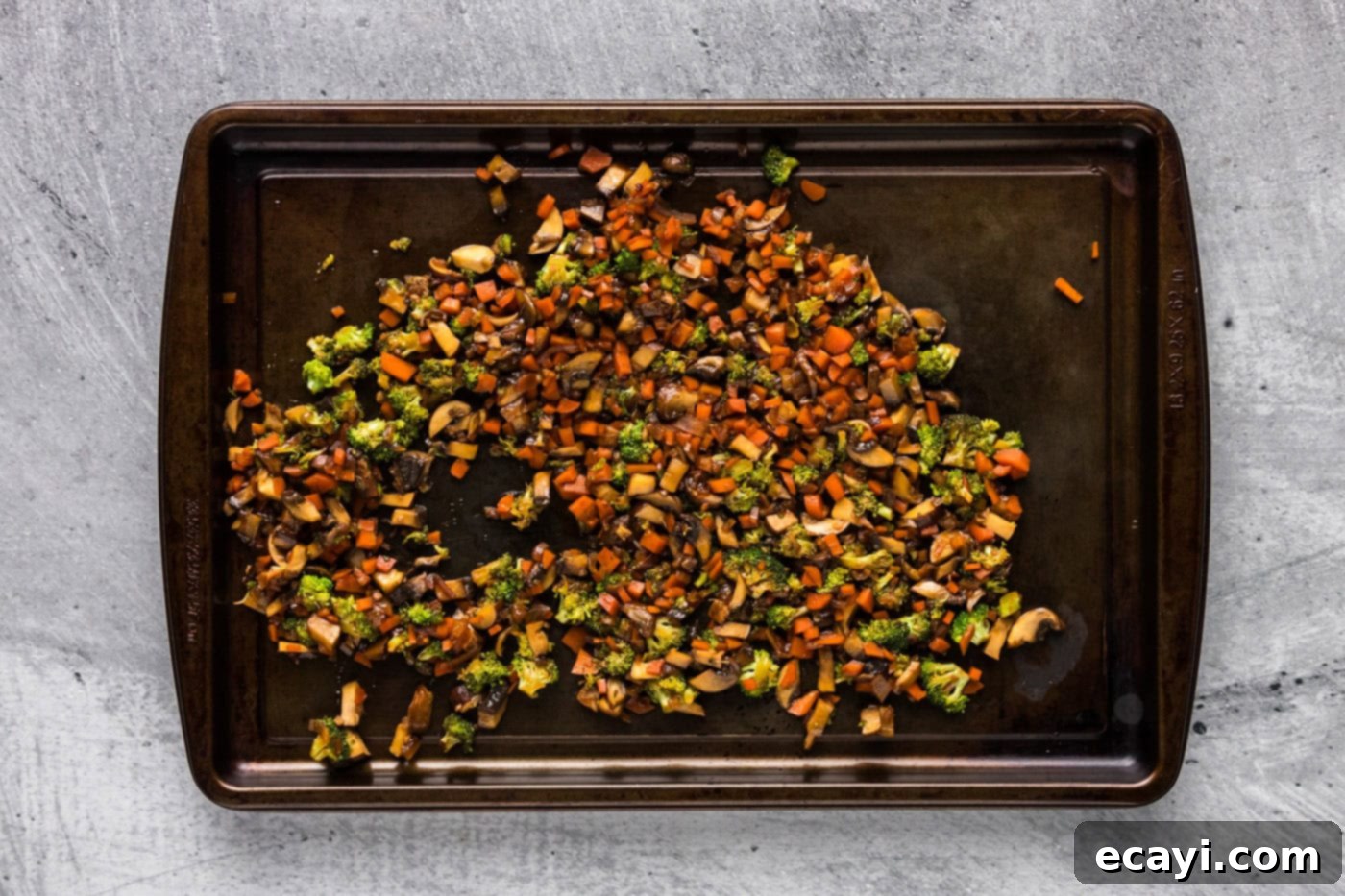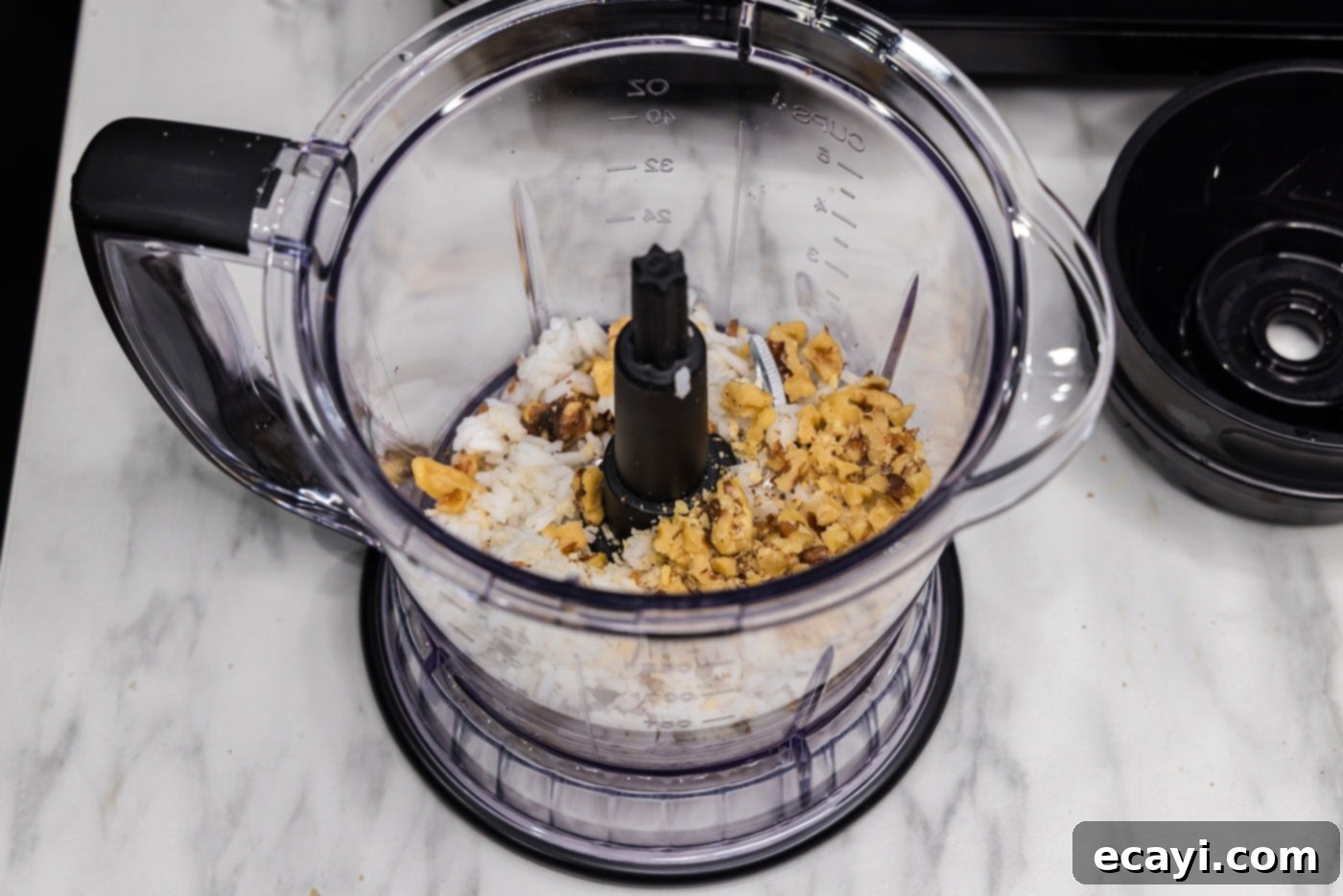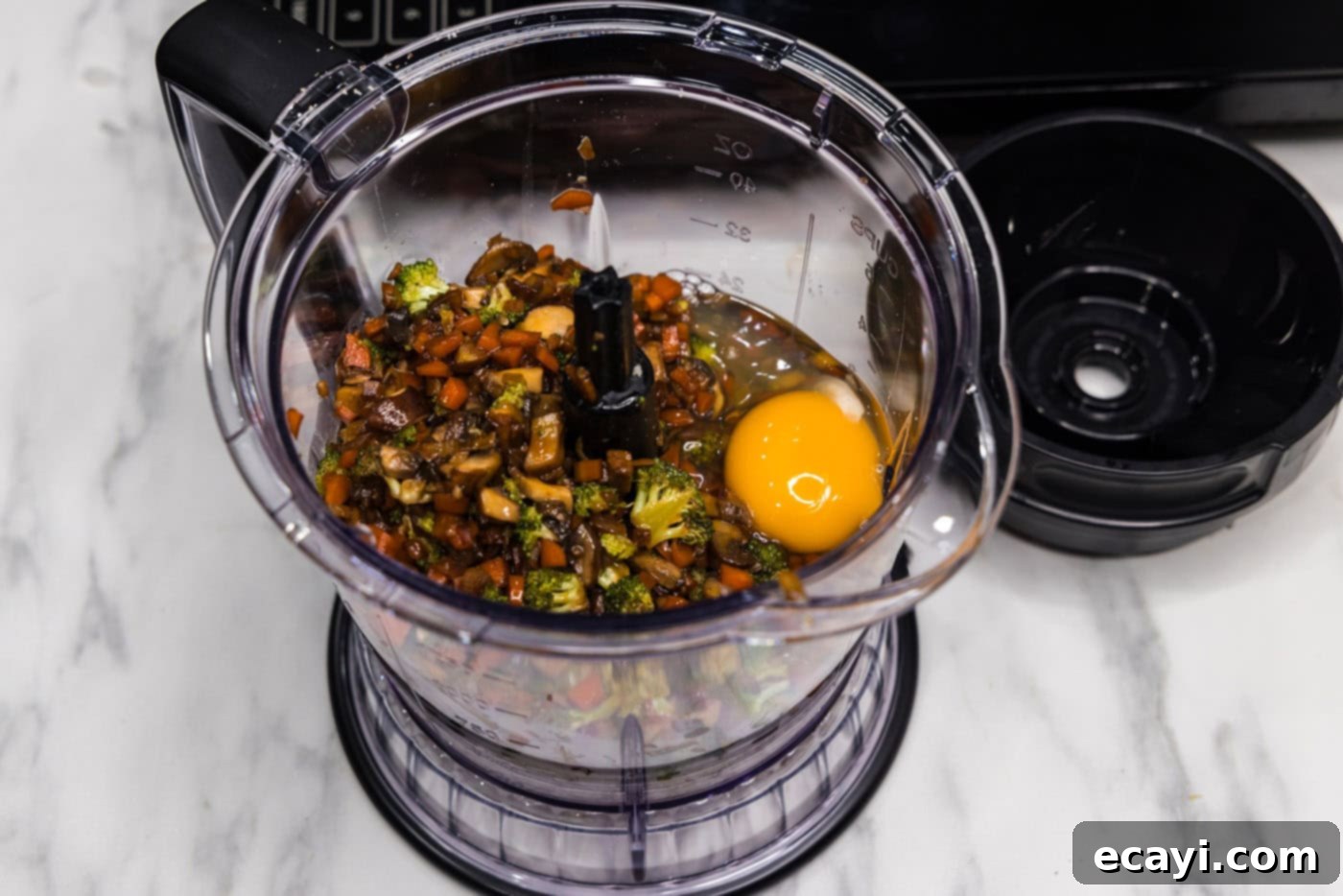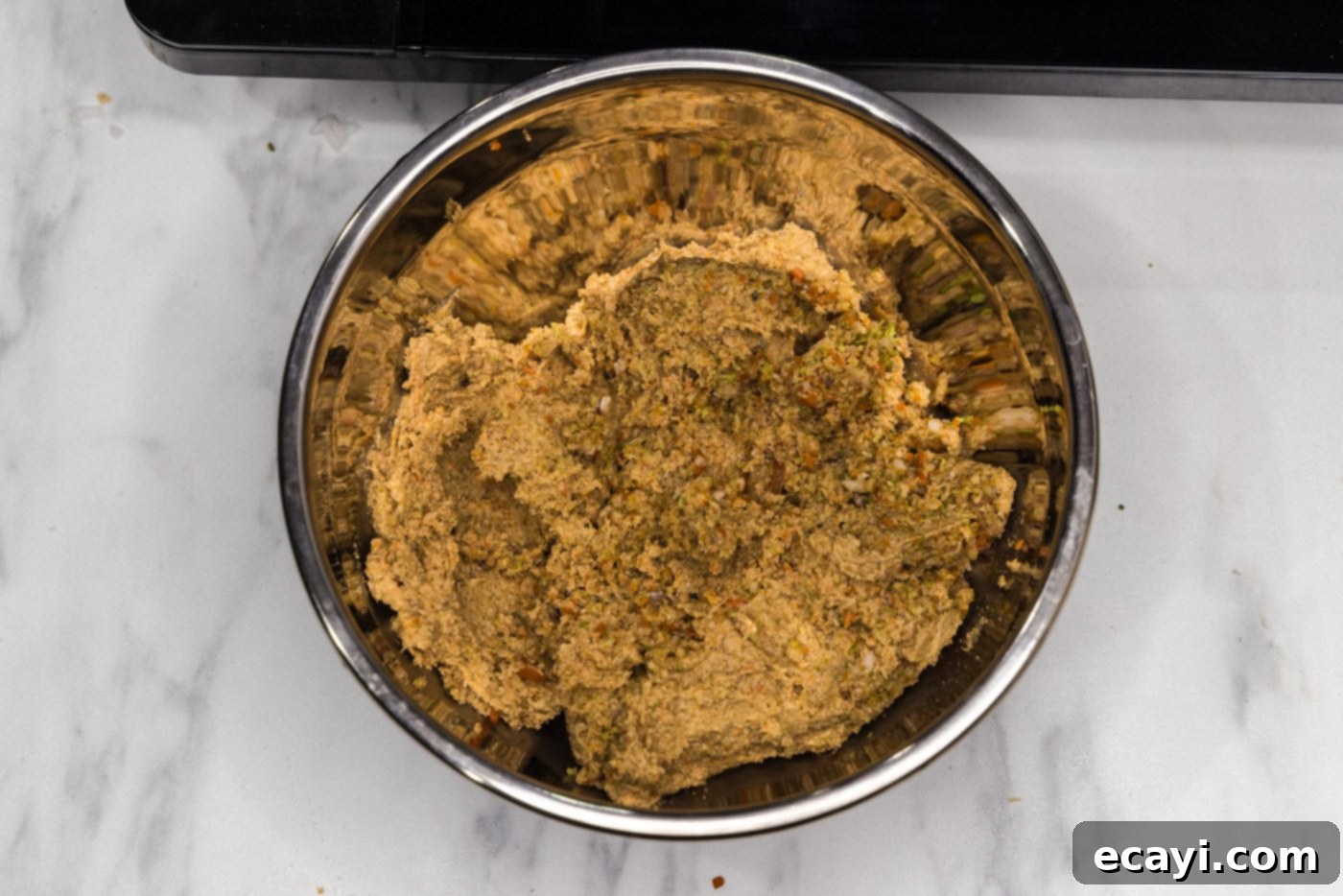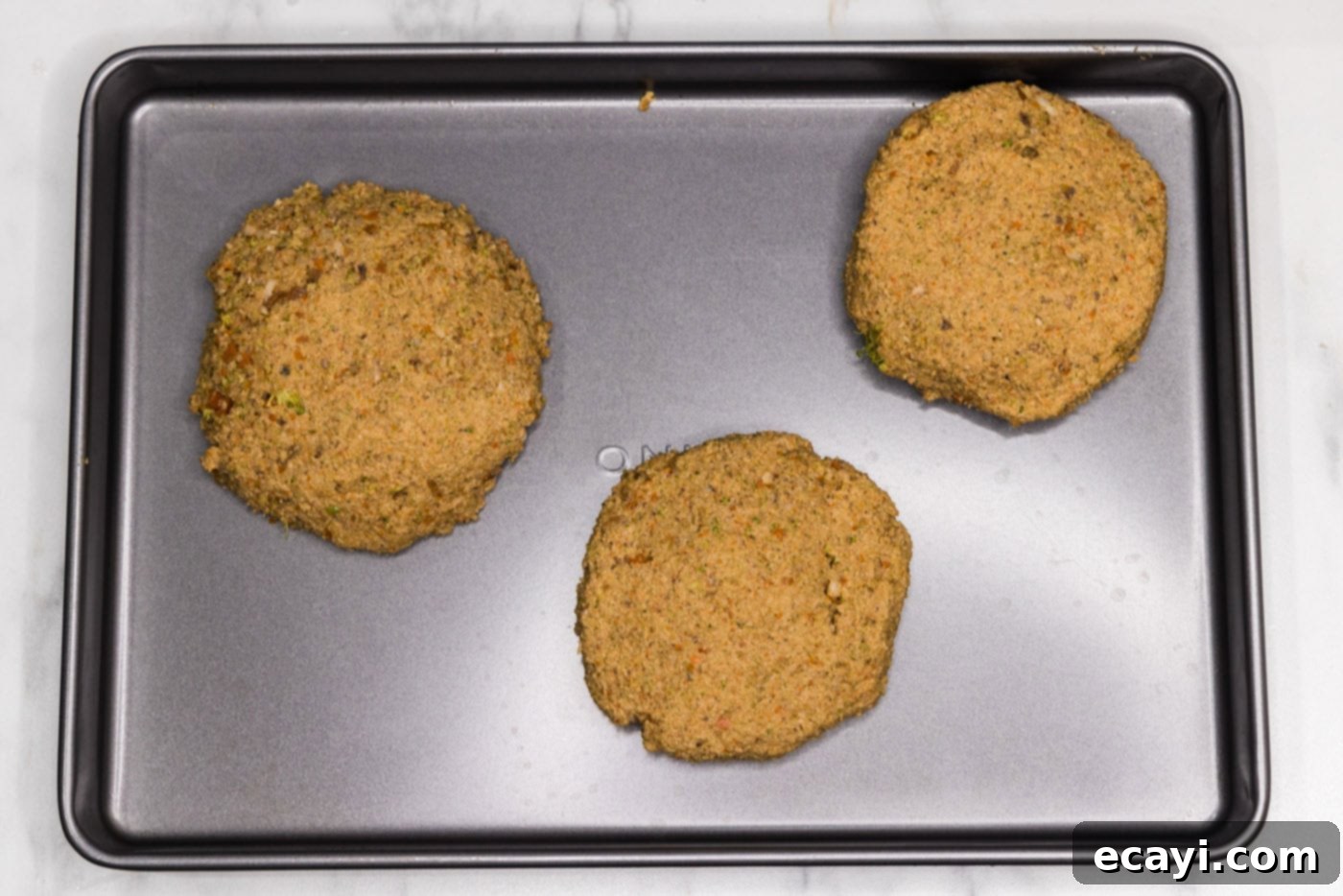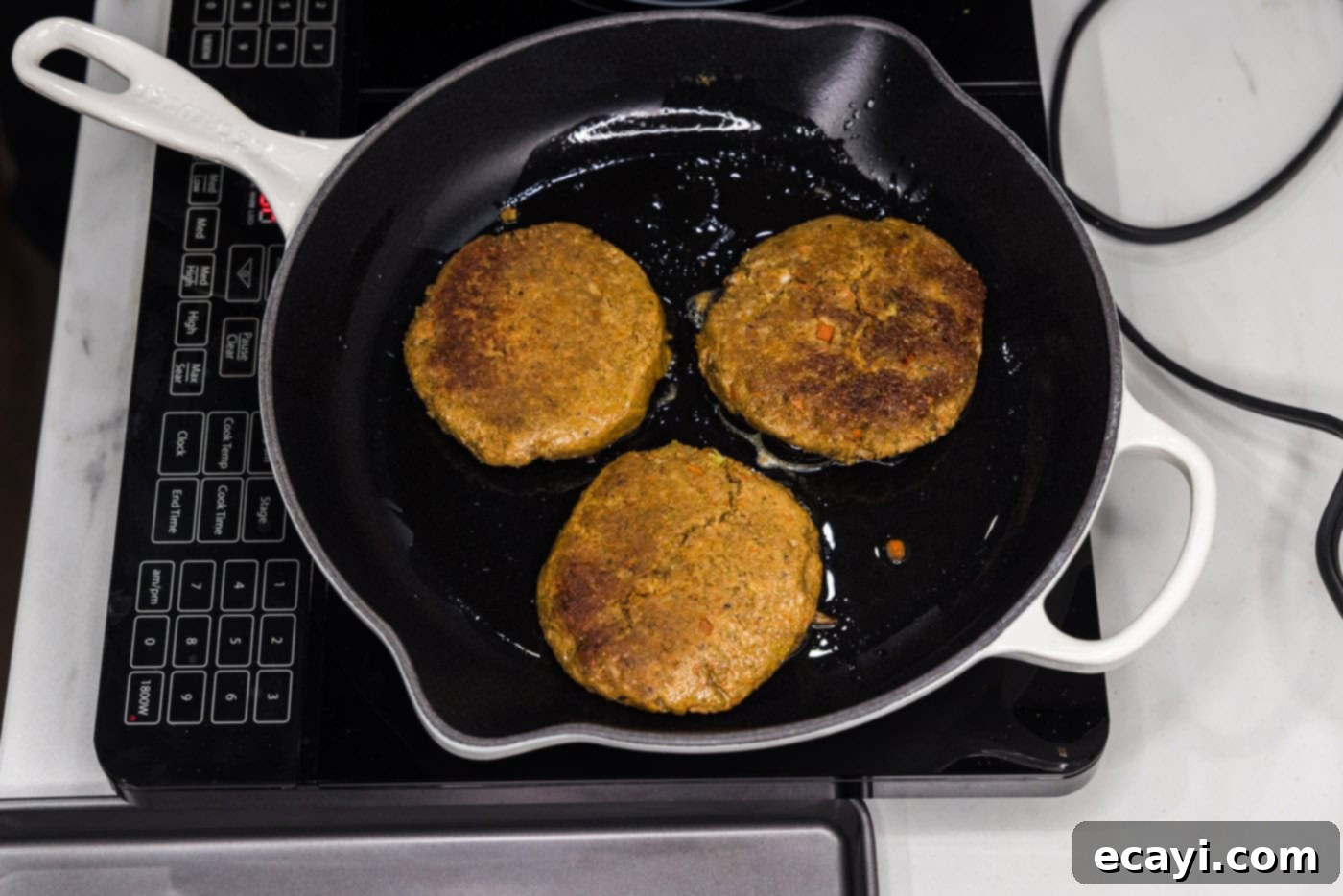Delicious Homemade Veggie Burgers: Wholesome, Flavorful, and Easy
Craving a satisfying and healthy meal that doesn’t compromise on flavor? Look no further than these incredible homemade veggie burgers! Packed with an abundance of fresh vegetables like shallots, carrots, and broccoli, hearty walnuts, savory mushrooms, and wholesome rice, these burgers offer a delightful culinary experience. They’re surprisingly easy to prepare and burst with so much flavor that even the most dedicated meat-eaters will be reaching for a second patty. Perfect for a weeknight dinner, a casual barbecue, or a wholesome lunch, these veggie burgers are sure to become a staple in your recipe rotation.
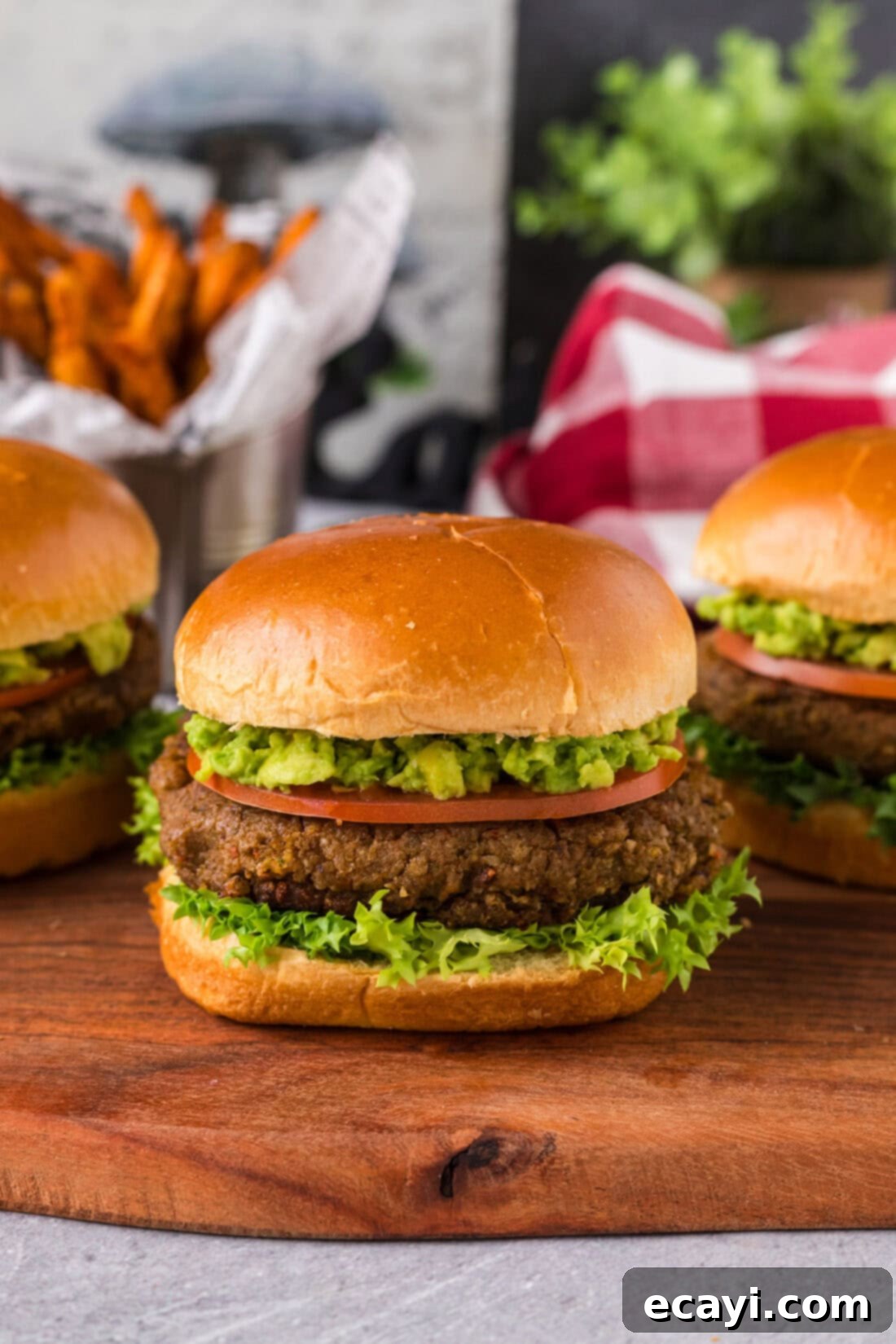
Why This Veggie Burger Recipe is a Must-Try
The world of veggie burgers is vast and varied, ranging from popular black bean burgers and earthy mushroom burgers to creative chickpea and quinoa combinations. What sets this particular recipe apart is its unique blend of textures and tastes, creating a burger that is both deeply satisfying and incredibly flavorful. Instead of relying on just one main ingredient, we use a symphony of hearty vegetables, grains, and nuts to build a complex and truly delicious patty.
This recipe shines because it uses a medley of fresh, nutrient-dense ingredients. Meaty mushrooms provide a rich, umami base, while sweet carrots and crisp broccoli florets add vibrant color, essential vitamins, and a pleasant chew. Shallots and garlic contribute aromatic depth, elevating the overall savory profile. Walnuts are incorporated not only for their healthy fats and protein but also for a satisfying crunch and nutty flavor that complements the vegetables beautifully. Cooked rice acts as a crucial binder, ensuring the patties hold together perfectly while adding a comforting texture.
The preparation method is straightforward and efficient. We begin by sautéing the fresh vegetables, which intensifies their natural flavors and reduces their moisture content – a key step for firm, non-crumbly burgers. Once cooled slightly, these flavorful vegetables are then blitzed in a food processor along with the rice, walnuts, and binders. This process creates a consistent, thick mixture that’s easy to form into patties. Whether you prefer the smoky char of the grill or the classic sizzle of a stovetop skillet, these versatile burgers cook up beautifully, delivering a fulfilling experience every time.
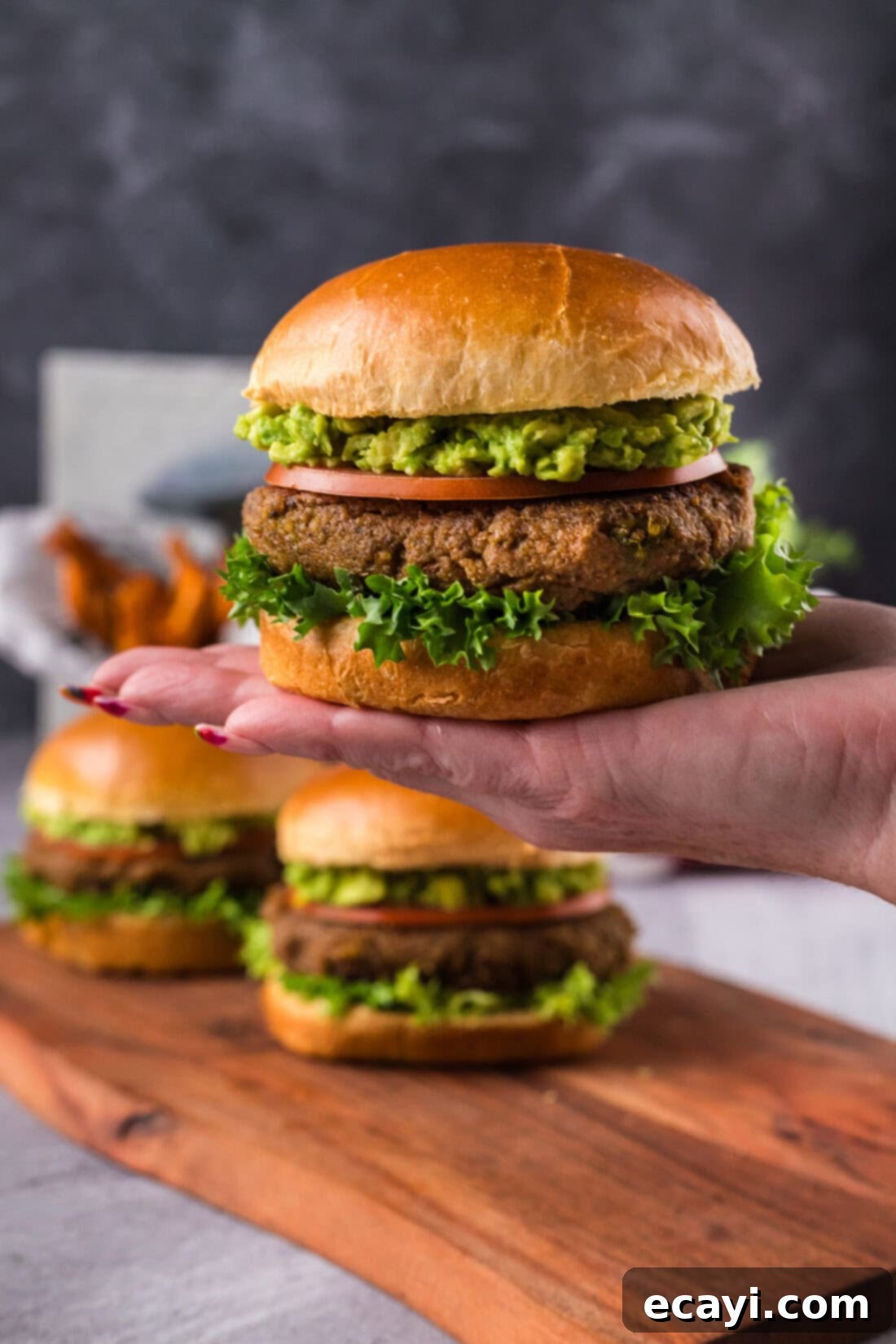
Essential Ingredients for Your Savory Veggie Burgers
Crafting the perfect homemade veggie burger starts with a selection of fresh, high-quality ingredients. This recipe calls for a balanced mix of vegetables, flavor enhancers, and binders that work in harmony to create a delicious and structurally sound patty. For precise measurements and step-by-step instructions, you’ll find the complete printable recipe version at the very end of this detailed post.
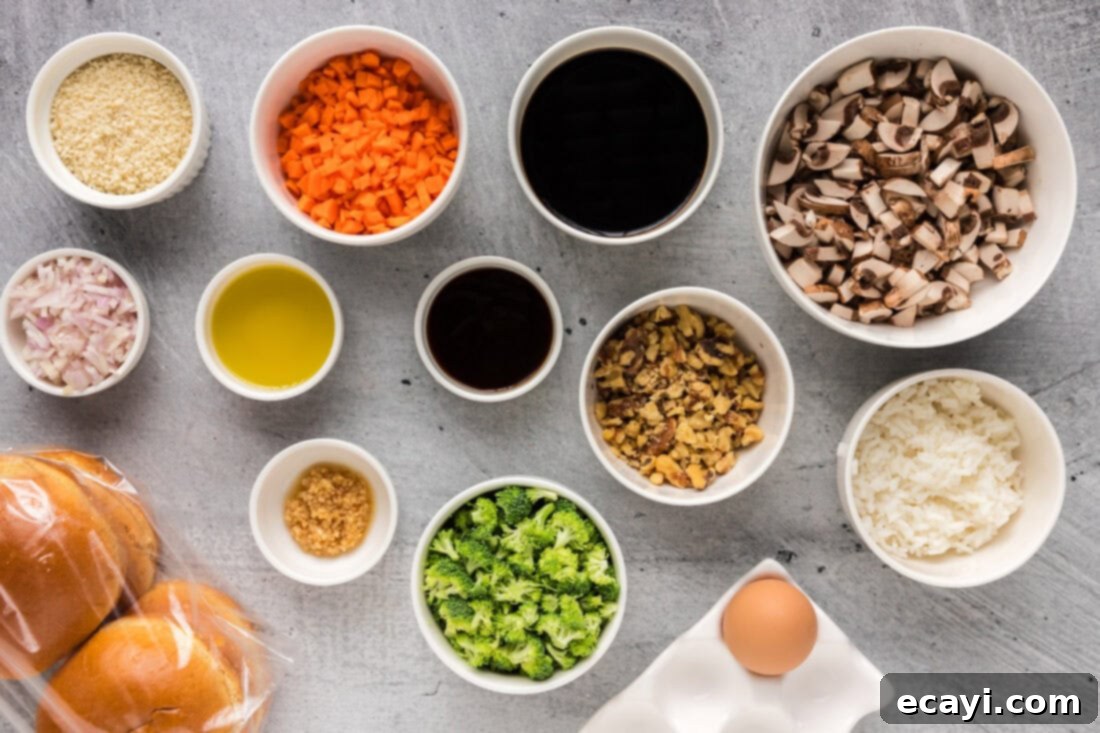
Ingredient Spotlight: Tips for Success and Smart Swaps
Understanding each component of your veggie burger mixture is key to customizing it to your taste and dietary needs. Here’s a closer look at the ingredients and some helpful substitution suggestions:
VEGGIES – Our vegetable foundation includes minced garlic, finely chopped shallots, small diced carrots, tender broccoli florets (cut into small pieces), and diced mushrooms (baby bella or white button varieties work great). This combination is specifically chosen for its diverse flavors, textures, and nutritional benefits. Mushrooms provide a “meaty” texture and rich umami, while carrots add sweetness and moisture. Broccoli contributes a slight bitterness and firmness, and shallots and garlic build a foundational aromatic layer. Ensure all vegetables are diced relatively small for even cooking and easier blending into a cohesive patty mixture.
FLAVORING – The soy sauce and vegetarian oyster sauce are crucial for infusing these burgers with a deep, savory, umami-rich flavor that truly makes them stand out. Soy sauce adds a salty, savory kick, while vegetarian oyster sauce (which is often made from mushrooms) provides a complex, slightly sweet, and intensely savory depth that mimics traditional oyster sauce without any animal products. If vegetarian oyster sauce is difficult to find in your local grocery store, you can easily substitute it with an equal amount of additional soy sauce, or even a dash of tamari for a gluten-free option. For an extra layer of flavor, consider adding a touch of toasted sesame oil during the sautéing process.
BINDERS – Achieving a veggie burger that holds its shape is all about the binders. In this recipe, a large egg, cooked rice, and plain breadcrumbs work together to create the perfect consistency. The egg acts as a primary binder, providing protein and moisture to hold the mixture together. The cooked rice adds bulk and helps absorb excess moisture, contributing to a tender yet firm patty. Breadcrumbs further aid in binding and absorb any remaining liquids, ensuring a cohesive texture that won’t fall apart during cooking. For those following a vegan diet, a flax egg makes an excellent alternative to a chicken egg: simply mix 1 tablespoon of ground flaxseed with 2 1/2 tablespoons of water and let it sit for 5-10 minutes until it thickens into a gel-like consistency. This creates a powerful plant-based binder that works just as effectively.
How to Prepare Your Flavorful Veggie Burgers
These step-by-step photos and detailed instructions are designed to help you visualize each stage of making this delicious recipe. For a quick reference or to print, you can Jump to Recipe to access the complete printable version, including all measurements and instructions, located at the bottom of this post.
- Sauté Aromatics: Begin by heating half of the olive oil in a large skillet over medium-high heat until it shimmers. Add the minced garlic and chopped shallots to the hot oil. Sauté them for 1-2 minutes, stirring frequently, until they become fragrant and slightly softened but not browned. This step establishes a delicious aromatic base for your burgers.
- Add Carrots: Next, add the diced carrots to the skillet. Continue to cook, stirring frequently, for about 4 minutes, or until the carrots begin to tenderize. Carrots take a bit longer to soften, so adding them at this stage ensures they’ll be perfectly cooked.
- Incorporate Broccoli and Mushrooms: Toss in the broccoli florets and diced mushrooms. Stir to combine all the vegetables thoroughly. Continue cooking for a few more minutes, allowing the mushrooms to release their moisture and the broccoli to slightly soften. The goal here is to reduce the overall moisture content, which is crucial for firm patties.

- Season and Simmer: Pour in the soy sauce and vegetarian oyster sauce. Stir everything together well and bring the mixture to a gentle boil. Once boiling, reduce the heat to medium and let it simmer for 2-3 minutes. This step allows the vegetables to absorb the rich flavors of the sauces and further reduces excess liquid.


- Drain and Cool: Carefully transfer the vegetable mixture to a colander to drain off any remaining excess liquid. Press gently to encourage drainage. Then, spread the drained vegetable mixture onto a plate or baking pan and allow it to cool completely. Cooling is vital to prevent the egg from cooking prematurely when added and to ensure the mixture binds effectively.

- Process the Burger Mixture: Once the vegetables are cool, add the cooked rice, walnuts, and plain breadcrumbs to a food processor. Pulse a few times to roughly chop the walnuts and combine with the rice and breadcrumbs. Then, add the cooled vegetable mixture and the large egg to the food processor. Process everything together until the mixture resembles a thick, cohesive paste. Be careful not to over-process; you want a texture that still has some small discernible bits of vegetables and nuts, not a completely smooth puree.



- Form Patties: Divide the mixture into three equal portions and gently form each into a burger patty, about 1-inch thick. Ensure the edges are smooth and the patties are firm. If the mixture feels too wet, you can add a tablespoon or two more breadcrumbs. If it’s too dry, a tiny bit of water or additional soy sauce can help.

- Heat Skillet: Heat the remaining olive oil in a clean skillet over medium-high heat until it shimmers. The oil should be hot enough to create a nice sear on the outside of the patties.
- Cook the Burgers: Carefully place the formed patties into the hot oil. Cook for about 5 minutes on the first side, until beautifully browned and crispy. Then, flip the patties over with a spatula and cook the other side for another 5-7 minutes, until equally browned and heated through. Avoid pressing down on the patties, as this can squeeze out moisture and make them dry.

- Serve: Once cooked, serve your homemade veggie burgers immediately on toasted sandwich buns with your favorite condiments and toppings. Enjoy the fruits of your labor!
Frequently Asked Questions & Expert Tips for Veggie Burger Perfection
Absolutely! Grilling adds a wonderful smoky flavor. To grill, make sure your grill grates are clean and well-oiled to prevent sticking. Place the patties gently on the preheated grill, keep the lid down, and cook for approximately 7 minutes per side. Be extra gentle when handling and flipping the patties on the grill grates, as they can be a bit more delicate than meat burgers. Avoid pressing them down with your spatula, as this can cause them to break apart and lose moisture.
Yes, these veggie burgers freeze beautifully, making them excellent for meal prep! You can freeze the shaped burger patties either before or after cooking. If freezing *before* cooking, arrange the raw patties on a baking sheet lined with parchment paper and flash freeze them for about 1-2 hours until solid. This prevents them from sticking together. Once frozen, transfer them to an air-tight freezer-safe container or a large zip-top bag, separated by layers of parchment paper, for up to 3 months. To cook from frozen, you can pan-fry or grill them, adding a few extra minutes to the cooking time per side. If freezing *after* cooking, simply let the cooked patties cool completely, then wrap each individually in plastic wrap before storing in an air-tight container or bag for up to 3 months. Reheat in a skillet, oven, or microwave until warmed through.
Cooked veggie burger leftovers can be stored in an air-tight container in the refrigerator for up to 3 days. To reheat, you can use a microwave for a quick warm-up, but for best results, warm them in a skillet over medium heat for a few minutes per side until heated through and slightly crispy again, or in an oven at 350°F (175°C) for about 10-15 minutes.
Yes! To make these veggie burgers gluten-free, ensure you use gluten-free breadcrumbs and gluten-free soy sauce (such as tamari). All other ingredients in the main recipe are naturally gluten-free.
Any cooked white or brown rice will work well for this recipe. Leftover cooked rice is perfect! The stickiness of white rice helps with binding, while brown rice adds a nuttier flavor and more fiber. Just make sure it’s fully cooked and cooled before adding it to the food processor.
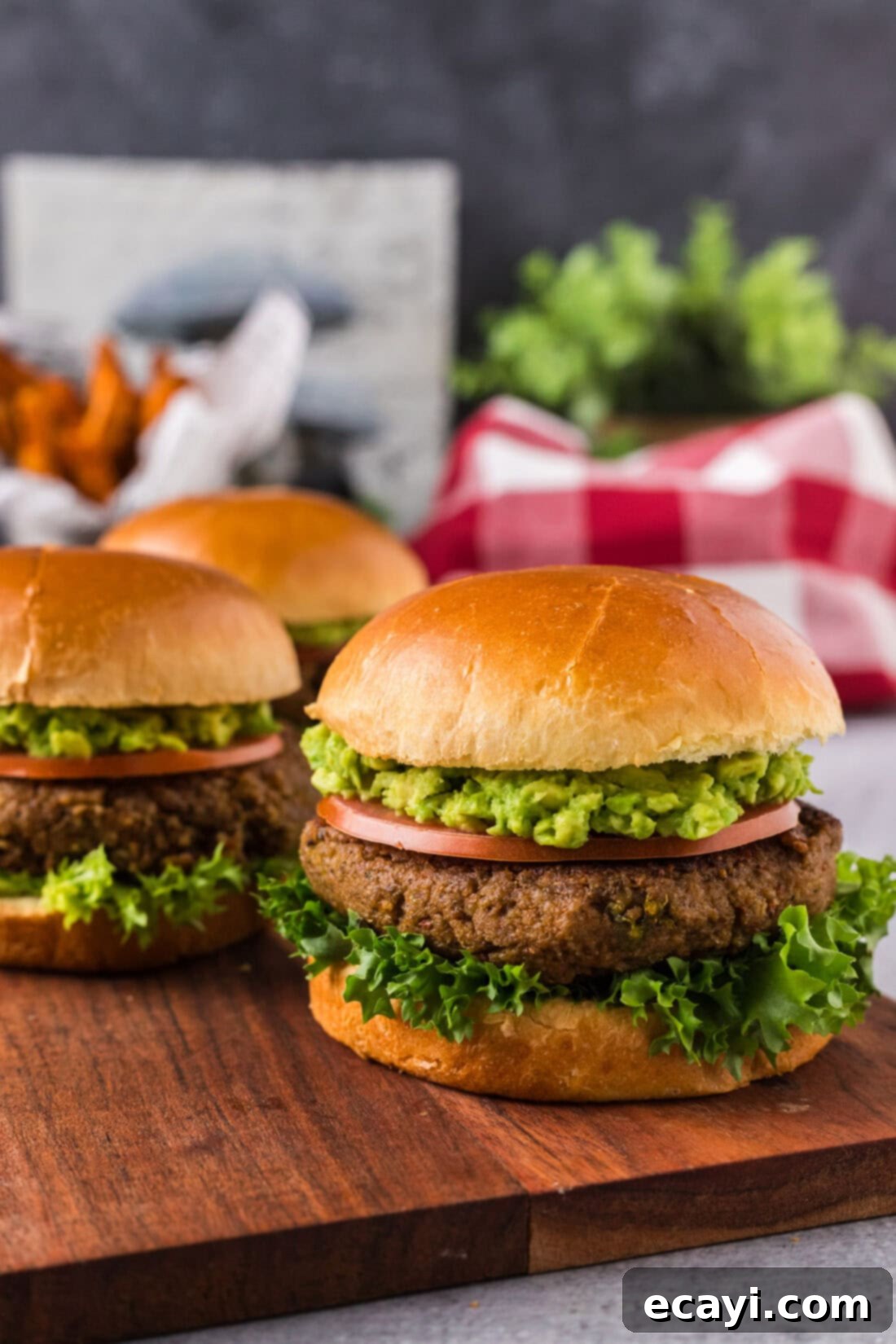
Creative Serving Suggestions for Your Veggie Burgers
These versatile veggie burgers are incredibly adaptable and can be served in countless delicious ways! Beyond the classic sandwich bun, consider these ideas to elevate your meal:
For side dishes, pair your veggie burgers with traditional favorites like crispy chips or golden french fries. For a lighter, fresher complement, opt for a vibrant garden salad, a zesty potato salad, or a refreshing summer pasta salad. If you’re grilling the burgers, why not throw some grilled vegetables (like bell peppers, zucchini, or corn on the cob) on the side for a complete barbecue experience?
When it comes to toppings, the possibilities are endless! We love a generous spread of creamy guacamole or sliced fresh avocado for healthy fats and a smooth texture. Sliced tomatoes, crisp onion rings, and fresh lettuce leaves add essential crunch and juiciness. To add a spicy kick, drizzle with your favorite hot sauce or a homemade sriracha mayo. Don’t shy away from classic burger condiments like ketchup, mustard, or relish. You could also experiment with caramelized onions, tangy pickles, a slice of melted provolone or cheddar cheese (for non-vegan options), or even a dollop of pesto or hummus. These burgers are also fantastic crumbled over a fresh green salad, tucked into a warm pita, or served as a main component in a vegetarian wrap. Enjoy customizing your perfect veggie burger!
More Delightful Plant-Based Recipes to Explore
If you loved these homemade veggie burgers, you’ll surely enjoy exploring more of our delicious plant-based and vegetarian options:
- Hearty Mushroom Burgers
- Savory Black Bean Burgers
- Flavorful Black Bean Tacos
- Crisp Vegetable Spring Rolls
I love to bake and cook and share my kitchen experience with all of you! Remembering to come back each day can be tough, that’s why I offer a convenient newsletter every time a new recipe posts. Simply subscribe and start receiving your free daily recipes!
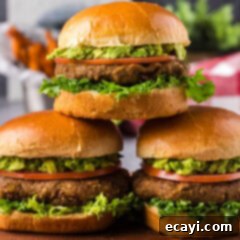
Veggie Burgers
IMPORTANT – There are often Frequently Asked Questions within the blog post that you may find helpful. Simply scroll back up to read them!
Print It
Pin It
Rate It
Save ItSaved!
Ingredients
- 3 Tablespoons olive oil
- 1 Tablespoon minced garlic
- 2 Tablespoons chopped shallot
- ½ cup diced carrots
- 1 cup broccoli florets cut small
- 8 ounces diced mushrooms baby bella or white button
- ½ cup soy sauce
- 2 Tablespoons vegetarian oyster sauce
- ½ cup cooked rice
- ½ cup walnuts
- ½ cup plain breadcrumbs
- 1 large egg
- 3 sandwich buns
Things You’ll Need
-
Large heavy bottomed skillet
-
Colander
-
Food processor
Before You Begin
- The soy sauce and vegetarian oyster sauce add loads of flavor. You can substitute the vegetarian oyster sauce with extra soy sauce if you can’t find it locally.
- For a vegan alternative to eggs, substitute with a flax egg which is 1 tablespoon of ground flaxseed mixed with 2 1/2 tablespoons of water.
Instructions
-
Heat half of olive oil in skillet over medium-high heat until shimmering. Add garlic and shallots, saute for 1-2 minutes.
-
Add carrots and cook until tender, stirring frequently, about 4 minutes.
-
Add broccoli and mushrooms, toss to combine.
-
Pour in soy sauce and oyster sauce, stir together and bring to a boil. Reduce heat to medium and simmer for 2-3 minutes.
-
Drain off excess liquid through a colander and move vegetable mixture to a plate or pan to cool.
-
To a food processor add the cooked rice, walnuts, and bread crumbs. Add the vegetable mixture and the egg. Process until mixture resembles a paste.
-
Form mixture into 3 patties.
-
Heat remaining olive oil in a skillet over medium high heat until shimmering.
-
Add patties to the hot oil and cook until browned, about 5 minutes. Flip over and brown the other side, about 5-7 minutes.
-
Serve on sandwich buns with your favorite condiments.
Expert Tips & FAQs
- To grill, Keep the lid down and cook for around 7 minutes on each side. Be gentle with veggie burger patties when transferring them to the grill grates.
- Store leftovers in an air-tight container kept in the refrigerator for up to 3 days.
- You can freeze the shaped burger patties before or after cooking. If freezing before cooking, I would recommend flash freezing the patties on a baking sheet until solid. Then, store them in an air-tight container or large ziptop bag separated by a layer of parchment paper for up to 3 months.
Nutrition
The recipes on this blog are tested with a conventional gas oven and gas stovetop. It’s important to note that some ovens, especially as they age, can cook and bake inconsistently. Using an inexpensive oven thermometer can assure you that your oven is truly heating to the proper temperature. If you use a toaster oven or countertop oven, please keep in mind that they may not distribute heat the same as a conventional full sized oven and you may need to adjust your cooking/baking times. In the case of recipes made with a pressure cooker, air fryer, slow cooker, or other appliance, a link to the appliances we use is listed within each respective recipe. For baking recipes where measurements are given by weight, please note that results may not be the same if cups are used instead, and we can’t guarantee success with that method.
